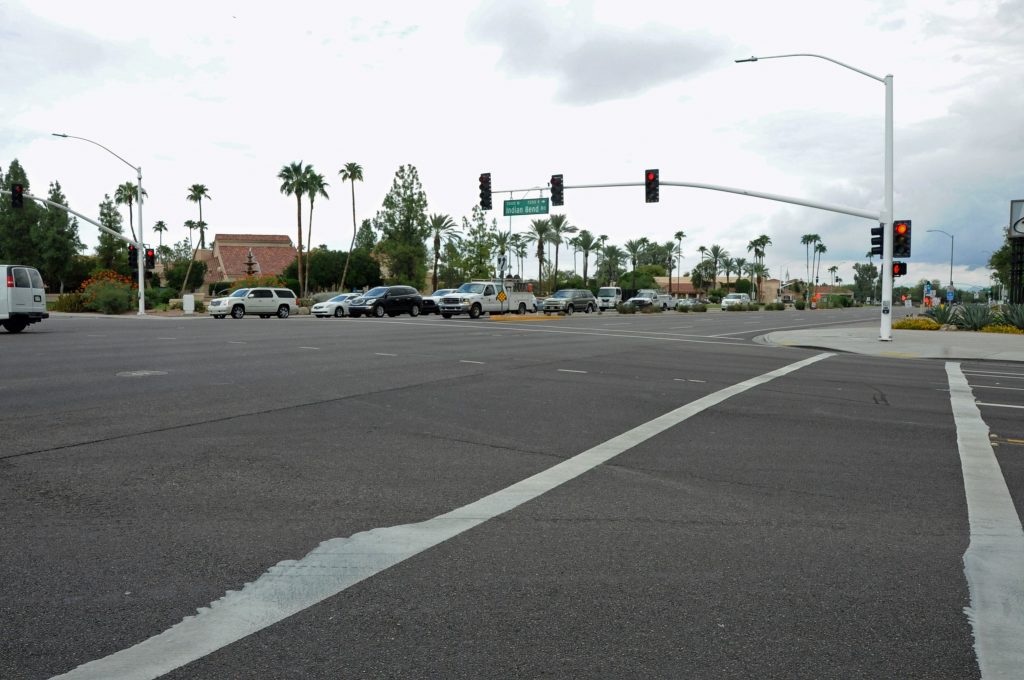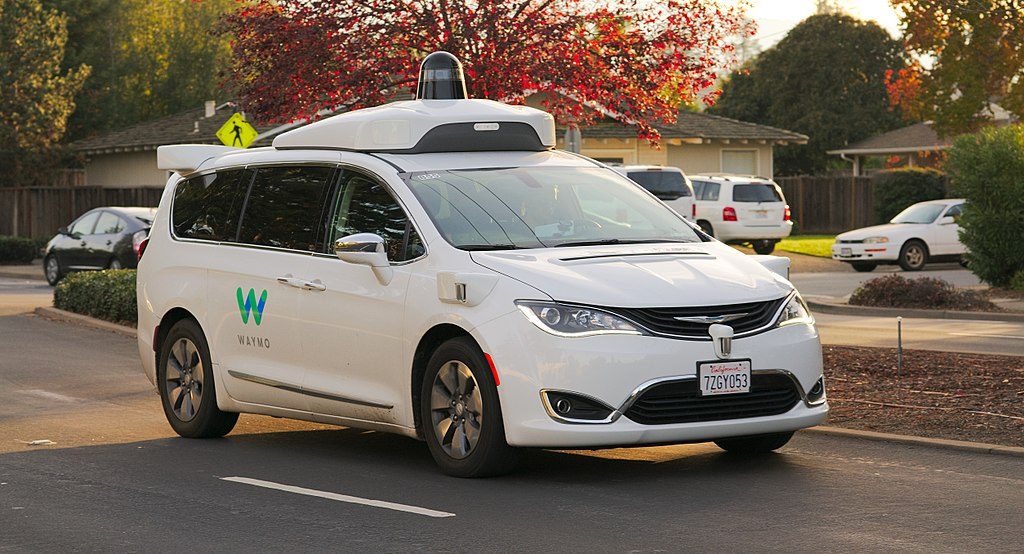
The National Transportation Safety Board agrees with T4America on automated vehicle safety: making safety assessments “voluntary” utterly fails to ensure public safety—and at least one person has already died as a result. The federal government’s current hands-off approach is unsafe for everyone, especially those outside of a car.

A dangerous intersection in Scottsdale, AZ, near Tempe. Photo by Lawrence G. Miller on Flickr’s Creative Commons.
Last week, the National Transportation Safety Board (NTSB) released its findings on Uber’s fatal 2018 Arizona crash, where 49-year-old Elaine Herzberg was killed by an automated vehicle (AV) while crossing the street with her bike.
“When companies test automated vehicles (AVs) without minimum safety standards to guide them, we are virtually guaranteeing that people will be killed unnecessarily by this technology —though heralded by boosters as the technology that will end all traffic deaths,” said T4America director Beth Osborne. “While Uber was at fault in this tragic death, we are also encouraged to see a federal agency take a hard look at the underlying causes, namely the lack of uniform safety standards and the willingness of those charged with protecting the public to abdicate that responsibility and allow these companies to set the rules.”
With no safety performance standards to speak of, Arizona—through an executive order from the governor—granted the ride-hail company the right to test AVs on all public roads, so long as a human driver is present to take over in emergencies. But that sole safety requirement failed Herzberg in numerous ways, the NTSB announced on Wednesday.
At the time of the crash, the human safety driver was watching a video on her phone—violating the company’s policy for that position. But according to the NTSB, “The federal government also bore its share of responsibility for failing to better regulate autonomous car operations,” writes the Verge reporter Andrew J. Hawkins. T4America would add that the State of Arizona might have established such a standard before allowing AVs on their streets but similarly failed.
During the hearing this week, NTSB board member Jennifer Homendy further berated the federal government’s safety ineptitude, calling NHTSA’s automated vehicle safety plan “actually laughable. …They should rename it a Vision for Lax Safety,” she said.
The nation’s foremost transportation safety experts just called our automated vehicle regulations “laughable.” So what is Congress doing about it? Nothing.
Fearing another safety-lite bill like the AV START Act—which lacked any safety performance standards, and merely contained “voluntary” safety assessments from automakers—Transportation for America and 46 other national groups wrote a letter to Congress spelling out exactly what needs to be in any future AV legislation to guarantee that this fledgling technology doesn’t kill people. That means concrete, enforceable performance standards, and the NTSB agrees. Such standards include “vision tests” to ensure an AV can properly identify and respond to its surroundings—including people crossing the street with their bikes, like Herzberg. (Uber’s vehicle was shockingly not even programmed to recognize Herzberg in this situation.) It also includes requirements that all AVs are built with proven safety technologies, like automatic emergency braking.
We sent that letter in August. This month, congressional committees released three sections of a forthcoming AV bill, which show that Congress is still not getting the message and is failing to prioritize safety above all else.
As a response, our coalition of national groups sent another letter to Congress criticizing the decision not to release the full bill and highlighting where these three sections failed. For example, the following essential components were not included in the released section: any mandatory rulemakings for necessary safety features to safeguard motorists and other road users; provisions for securing this advanced technology from cyberattacks; an explanation of how federal preemption of state laws would be avoided; how local policy control for safety on the roads would be ensured; a data sharing framework for consumers, cities, states, law enforcement, and federal regulators; adequate resources for NHTSA; and definitions of the terms used in the sections, among other issues.
Transportation for America, the 46 other national groups who joined us to fight for safety, and the NTSB agree that nobody wins when safety isn’t a priority.





